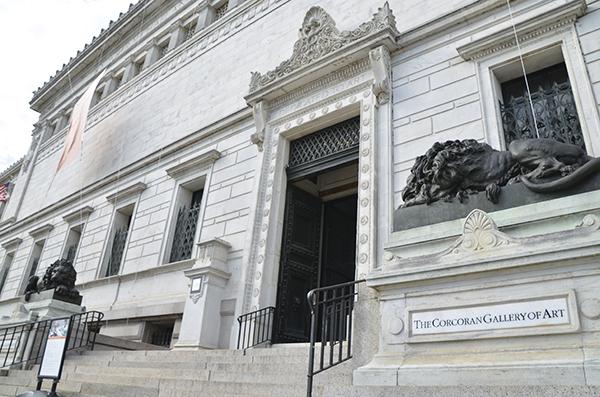Much of the interior of the Corcoran’s 17th Street building is now considered a historic landmark, a move which could complicate GW’s plans for a massive renovation to the inside of the building.
Previously, GW planned on spending about $80 million to revamp the inside of the 17th Street building. But after the Historic Preservation Review Board designated most parts of the inside of the building as historic landmarks Thursday, those renovations will have to be modified to meet new standards – a process which experts said could cost GW more time and money.
GW will now need to have all renovations approved by the D.C. government and will have to undergo review and approval processes when applying for and using building permits. Previously, the University would only have to make sure changes met the usual guidelines of the Department of Consumer and Regulatory Affairs, but now all construction will have to be approved by D.C.’s Office of Planning.
Staff in the city’s planning office will approve all proposed renovations within the protected spaces in the building. Changes that involve the removal, destruction or alterations to any part of the interior will have to be approved.
Edward Giefer, a Freedom of Information Act officer in the office, said GW officials will work with the Office of Planning’s Historic Preservation Office to develop a plan to keep up with and rehabilitate the interior, a suggestion made by the Historic Preservation Board in their proposal to designate the building as historic.
“Any construction activity requiring a D.C. building permit will be subject to review to ensure that the building’s significant spaces, features and finishes will be retained and that alterations are compatible with those interiors,” Giefer said.
University spokeswoman Candace Smith said it was too early in the process to determine the additional costs the University will take on as a result of the ruling.
“Phased renovation of the building will continue. The designation of certain spaces in the building as historic will not prevent renovation in those areas, but will require greater coordination with the historic preservation review office,” Smith said.
Smith said the University will continue to evaluate the condition of the building and will soon announce an architect for the project and a contractor for the renovations.
Richard Longstreth, the director of the historic preservation graduate program at GW, said the quality of the contractor chosen by the University will determine how best the institution can balance both preserving and updating the space.
“It behooves the University to hire an absolutely top-flight firm in this area of specialization,” Longstreth said. “If you have cancer you don’t consult your general practitioner, you get the best specific doctor to cure that cancer.”
Longstreth said the University can cut costs in the long run by hiring an architect experienced in renovating historically preserved interiors.
The D.C. Preservation League and Save the Corcoran – a group of Corcoran alumni, faculty and Corcoran community members – have been advocating for the 17th Street building’s historic designation since 2012, two years before GW bought the building. The push was officially supported by the Foggy Bottom and West End Advisory Neighborhood Commission at a meeting last month.
During negotiations with the Historic Preservation Review Board, GW officials only wanted certain ceremonial spaces, including the building’s atrium, rotunda and grand staircase, to be granted historic status so the University could modernize classrooms and utilize gallery space.
When the University acquired the building as part of the schools’ merger, gallery officials had estimated the full renovations to total about $130 million, but University President Steven Knapp later said those costs would be lower because the University would not renovate it as a museum.
Earlier this week, the University sold the Corcoran’s Fillmore building in Georgetown to the S&R Foundation, a nonprofit which supports individuals in the arts, sciences and social entrepreneurship. Knapp previously said revenue from the sale would help fund renovations to the Corcoran’s 17th Street building.
Peyton Hall, a professor of architecture at the University of Southern California, said the current state of a building, based on its architectural integrity and its most recent renovations, affect how easily owners can make renovations.
The first round of renovations to the space, which began this fall, cost about $25 million and included structural improvements, such as to the roof, skylights, exterior walls and windows. Knapp said future changes would include adding more bathrooms and shifting around classrooms and gallery space.
Hall said historic renovations might not always be more expensive, because the University may have less work to do in the long run by making the structure more sustainable now and requiring less upkeep in the future.
“Part of the consideration is not only what it was in the past, but how it can adapt to the present,” Hall said. “Hopefully this designation makes the building something that is valued at the University and in the community.”







